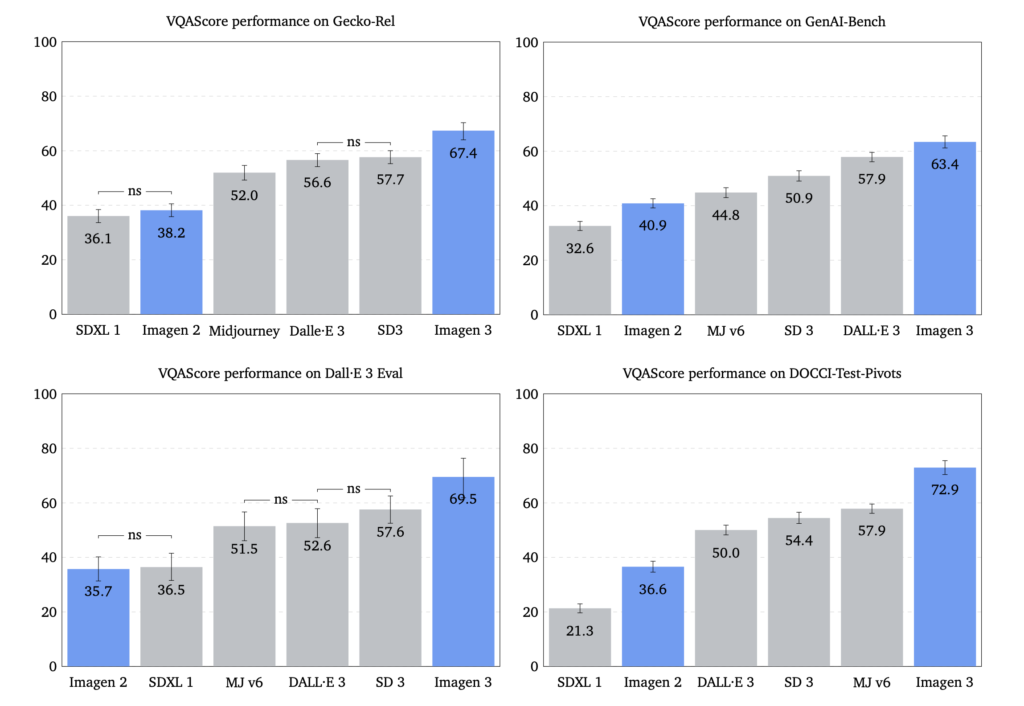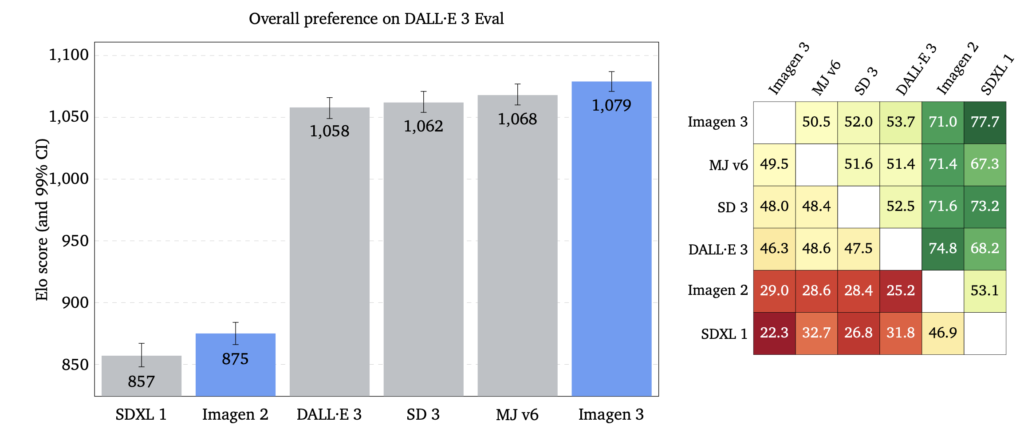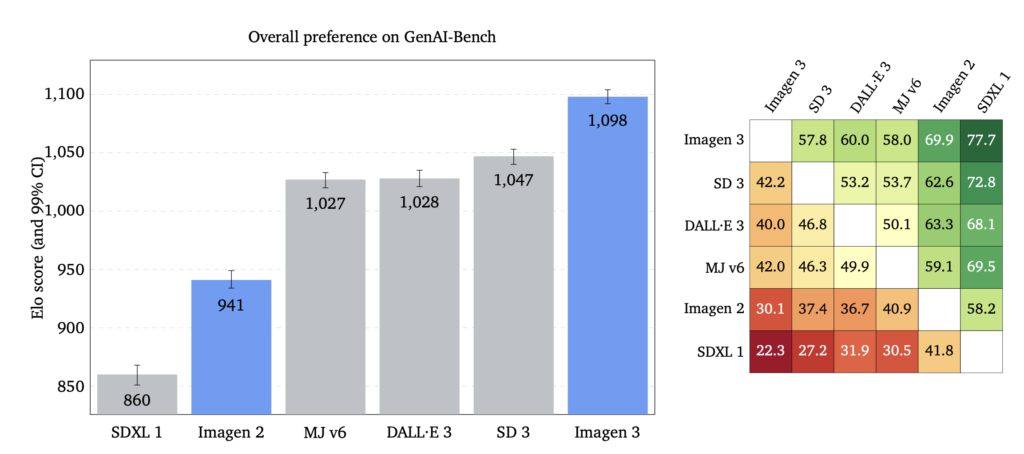How Imagen 3 Stands Out in Photorealism, Prompt Adherence, and Ethical AI Use
- High-Quality Image Generation: Imagen 3 excels in creating highly realistic images from complex text prompts, outperforming other state-of-the-art models.
- Safety and Ethical Considerations: Google has implemented extensive safety protocols to minimize potential harm, including filtering unsafe content and eliminating biases.
- Evaluation and Validation: Imagen 3 has been rigorously evaluated against other models using both human assessments and advanced metrics like VQAScore and Gecko.

Google‘s latest advancement in the realm of artificial intelligence, Imagen 3, represents a significant leap in the field of text-to-image (T2I) generation. This new model in the Imagen series is designed to create stunningly realistic images based solely on textual descriptions, setting new standards in the industry. As AI continues to evolve, the importance of producing high-fidelity, contextually accurate images cannot be overstated, particularly as these models find applications in creative industries, advertising, and beyond.

1. High-Quality Image Generation
At its core, Imagen 3 is a latent diffusion model that delivers images at a native resolution of 1024 × 1024 pixels. For projects requiring even higher resolution, the model supports upscaling by 2×, 4×, or even 8×. During evaluations, Imagen 3 consistently outperformed other state-of-the-art models in terms of photorealism and its ability to adhere to intricate, lengthy user prompts. This makes it an ideal tool for generating complex, high-quality visuals where detail and accuracy are paramount.

2. Safety and Ethical Considerations
With the increasing deployment of T2I models, Google has placed a strong emphasis on the ethical use of AI and the potential risks associated with these technologies. Imagen 3 was developed with a rigorous safety protocol to mitigate risks, including filtering out violent, low-quality, or AI-generated images during the training phase. The model also benefits from a multi-stage filtering process to eliminate personally identifiable information (PII) and other unsafe content from the training data. By using synthetic captions generated from advanced Gemini models, Imagen 3 not only broadens the linguistic diversity but also ensures that the captions are free from harmful biases and misinformation.

3. Evaluation and Validation
One of the key challenges in the development of T2I models is ensuring that the generated images align with human expectations. To address this, Google employed a dual approach using both human annotators and advanced metrics, VQAScore and Gecko, to evaluate the performance of Imagen 3. The results showed that these metrics reliably correspond with human judgments about 73.3% to 80% of the time, a strong indicator of their effectiveness. When both metrics agreed, their combined assessment matched human ratings in 94.4% of cases, underscoring their reliability in ranking model performance.

Google’s Imagen 3 marks a pivotal moment in the evolution of AI-driven image generation. By setting new benchmarks in photorealism and prompt adherence, while simultaneously addressing the ethical implications of AI, Imagen 3 is positioned to become a key tool in the growing arsenal of creative and technical professionals alike. With rigorous validation processes and a commitment to reducing potential harm, Google continues to lead the charge in responsible AI development, paving the way for more advanced, yet safe, AI applications in the future.

